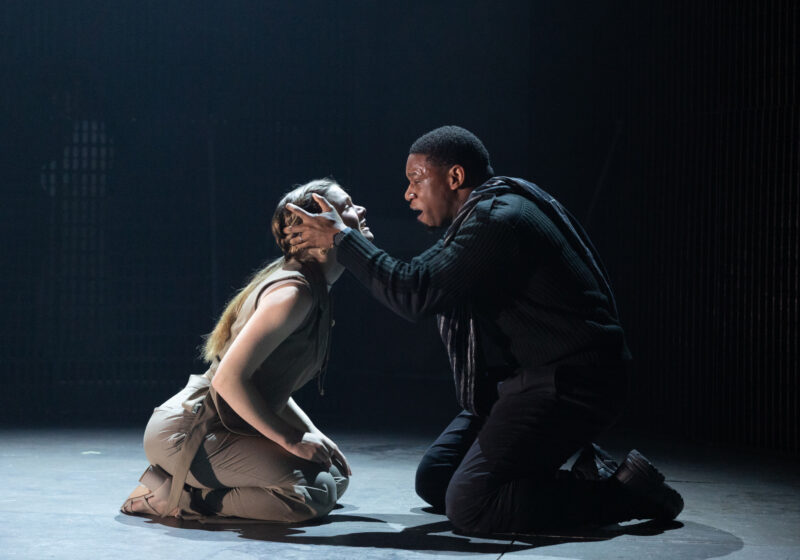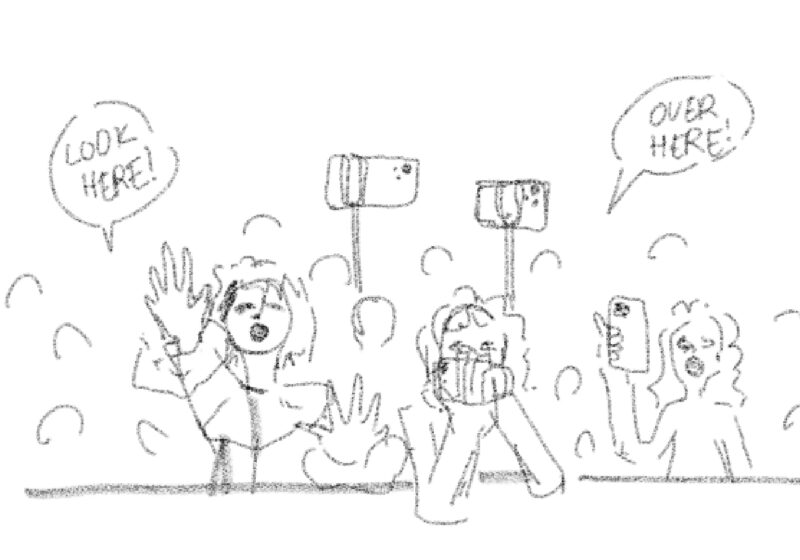Crumpled papers are piled high, tossed carelessly surrounding a chair and a desk. The light of a new day filters in from a window we cannot see. We look through the archway, squint at the scene and shift closer to read, “The decision was made to try again.”
The scene feels all too familiar and though we are physically separate from it, we can’t help but stare for a moment longer, mentally recalling when this feeling belonged to us before stepping toward the next photograph.
“She Quietly Considers,” an exhibition by Christine Shank on display in the Hartnett Gallery, is an untitled series of thought provoking and emotionally charged photographs. Sliding from frame to frame, we are taken through a number of trauma-filled situations and, though the photos depict alien props and circumstances, they – and the phrases next to them – evoke emotions familiar and personal.
Christine Shank describes her process as, “design and construct[ion] [of] interior rooms that show an aftermath of a destructive event.” Her “domestic spaces illustrate one fragment of a larger narrative, depicting stories of frustration and loss, implying a connection to personal relationships through titling.”
The process she uses to create these photographs is fascinating. Originally hoping to use existing houses, she realized that the cost would be too high to achieve her vision. Instead, she explored and carried out these scenes on a miniature scale.
All the images used in the show were set up and photographed in doll houses. Each photo is constructed, her hand controlling the finest detail. It is ironic, with this level of control, that the scenes she creates are those of disaster and upheaval.
In the act of photographing, she establishes our stance in relationship to her scenes. She draws us in with visions of disaster, and her use of phrases makes us linger. She also keeps us at a distance.
In addition to the already disconcerting scenes of desertion and destruction, Christine Shank uses a 4×5 camera instead of a normal 35mm camera. This enables her to rotate the lens so that it is no longer parallel to the film. The result is a skewed line of focus in the photograph. Instead of a parallel line of focus for the viewer looking in to the picture, many of the scenes have focus lines that cross the picture at odd angles creating a dizzying effect.
She pushes us more safely outside of her created traumas by framing her photographs so that we are always just outside a doorway looking in.
It is this play between our close emotional connections to the phrases of her story, and the intense visual experience she creates that keeps us at odds with her photography.
The show will be open through the October 1. Gallery hours are Monday to Friday, 11 a.m. to 8 p.m., Saturday and Sunday, noon to 6 p.m. For more information call the Hartnett Gallery at (585)275-4188.





